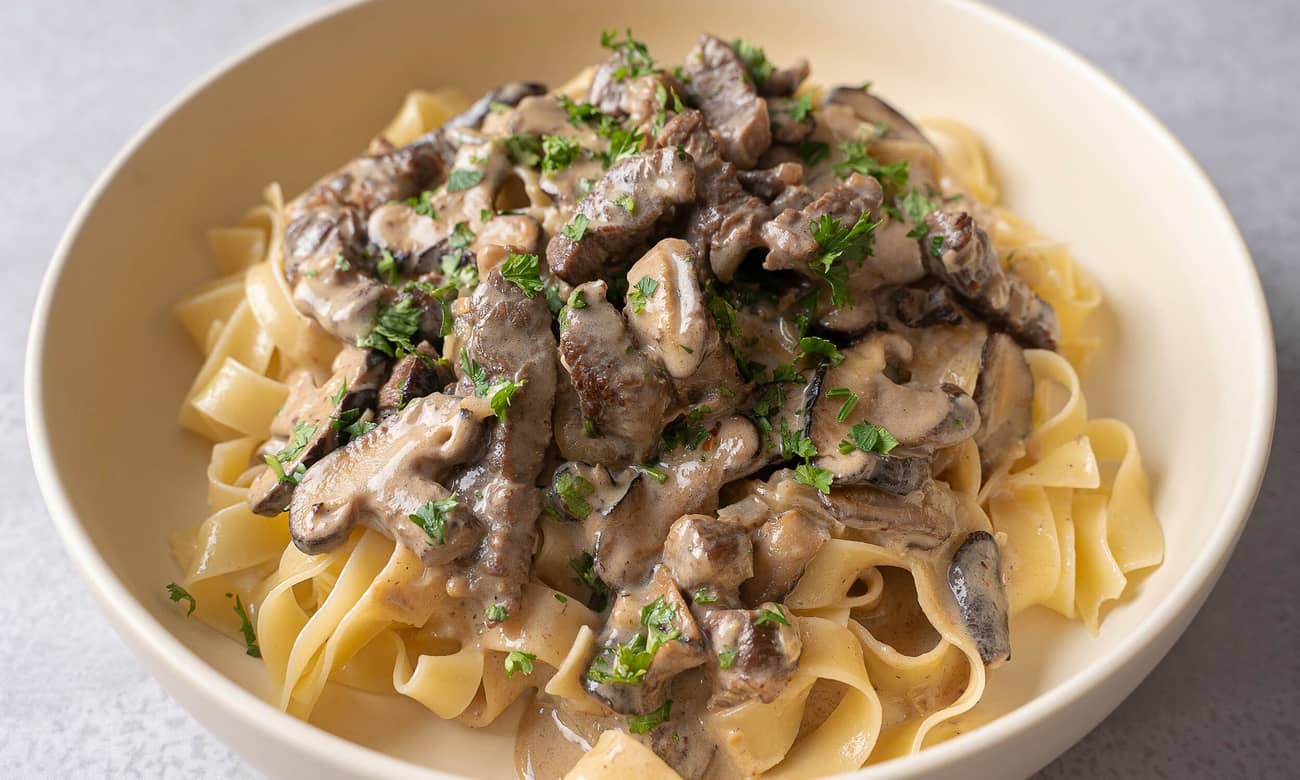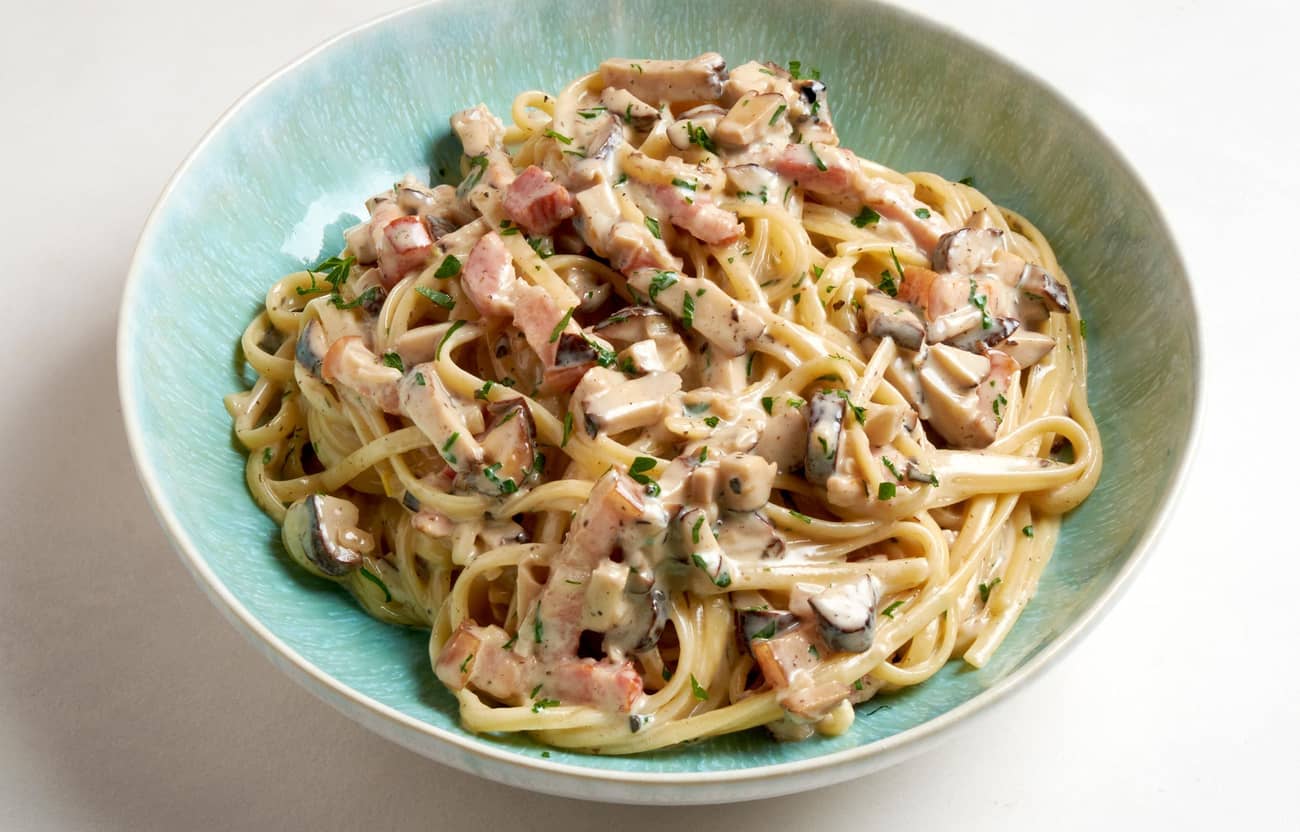If Filipino carbonara has cream, Italian carbonara sauce uses eggs—raw yolks, to be exact. This understandably raises some concerns, so we cook our carbonara sauce over a double-boiler. The mild heat pasteurizes the eggs while gently curdling them into a velvety, cheesy sauce.
Italian carbonara uses guanciale (salted pork jowl), which can be difficult and expensive to source. Pancetta is mellower in flavor, but makes a fine (and slightly cheaper) substitute. In a pinch, go with thick-cut bacon—we won’t tell the purists.
Set up a double boiler: Add an inch or two of water to a pot and bring to a simmer. Place a heatproof mixing bowl on top of the pot. Make sure the bottom of the bowl does not make contact with the water.
Make sauce: Combine pecorino cheese, Parmigiano Reggiano, egg yolks, and cracked pepper in the mixing bowl. Whisk until the mixture thickens then set aside. Maintain a simmer and do not bring water to a boil—the mixture might turn into scrambled eggs!
Cook pancetta: Place pancetta or guanciale in a cold pan over medium-low heat until fat renders out. Spoon out extra rendered fat until you’re left with about 1 ½ tablespoons of it in the pan.
Mix pasta: Add the cooked pasta, a couple tablespoons of the carbonara sauce, and a bit of reserved pasta water to thin it out. Mix until well combined.
Serve: Plate carbonara on a serving dish. Top with extra Parmigiano Reggiano add a few cracks of black pepper. Serve while still warm.
Pancetta is salt-cured Italian pork belly that can be used like bacon in cooking.
You can find it in your supermarket's deli section, or specialty groceries like Santi's and Euro Rich.
You can use guanciale (pork jowl or cheeks), the traditional cured meat used in carbonara.
Otherwise, use cured, smoked, and thick-cut bacon.
We formulated this recipe for people worried about uncooked eggs, which some traditional carbonara recipes insist on. A double boiler gently cooks the eggs without scrambling them.
You can temper the eggs by whisking in some warm pasta water in a slow stream. The extra starch from the water helps make a thicker sauce, too.
We don't recommend it. Fresh Parmesan tastes and melts better than bottled Parmesan, which tends to be saltier and grittier.
Bottled Parmesan includes anti-caking ingredients to prevent the cheese from sticking together. This means it doesn't melt very well when heated. If you use it in a sauce, you might get a lumpy, grainy texture. Save the bottled Parm for garnishing!


